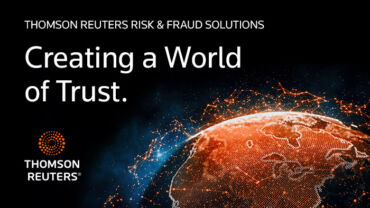Canada’s recent Modern Slavery Act, which went into effect in January, is another regulatory step on the global journey to end forced labor within companies’ supply chains
Both financial institutions and government legislative bodies are spurring corporate action to increase supply chain transparency around human rights issues. For example, one investment management company stated that a “poor human rights performance can expose companies to both financial risks and values-based risks” in the company’s structured approach around human rights in its sustainable investment strategies.
In addition, government action around making companies accountable for improving human rights has been increasing over the last decade with laws passed in and the United Kingdom and the European Union with separate legislation undertaken in France and Germany. Now, Canada enters the arena — with its Fighting Against Forced Labour and Child Labour in Supply Chains Act, commonly referred to as the Modern Slavery Act (MSA) — which came into force on January 1.
The MSA implements Canada’s international commitment to reduce the use of forced labor and child labor in foreign and domestic supply chains by increasing the transparency around these areas for certain organizations. To do this, the MSA imposes public reporting obligations on a broad range of entities, including government institutions, domestic companies, and many foreign companies that do business or own assets in Canada. These reporting obligations include filing annual public reports on measures taken by covered entities to identify, address, and prevent both forced labor and child labor in their supply chains.
How to comply
The first step that affected organizations need to take in order to comply with Canada’s MSA law is to determine what, if any, reporting requirements to which an organization may be subject. The law requires government institutions and entities that meet certain criteria to meet these reporting requirements.
The next step is determining if an organization must submit an annual report. For government institutions, organizational leaders should determine if the institution produces, purchases, or distributes goods in Canada or elsewhere. For other entities, it is important to determine if the entity produces, sells, or distributes goods in Canada or elsewhere; imports into Canada goods that are produced outside Canada; or controls an entity that engages in any of these activities.
New reporting obligations include filing annual public reports on measures taken by covered entities to identify, address, and prevent both forced labor and child labor in their supply chains.
Additional actions to ensure compliance are focused on understanding what needs to be reported and ensuring that the report created for compliance is complete. For government institutions, their compliance professionals should detail the steps taken during the previous financial year to prevent and reduce the risk that the use of forced labor or child labor was used at any step of the process of goods produced, purchased, or distributed by the institution. For other entities, compliance professionals should outline the measures implemented in the past fiscal year to mitigate and diminish the risk of employing forced or child labor at any step of the production of goods in Canada or elsewhere or of goods imported into Canada by the entity.
The final step involves ensuring the annual report is approved according to the law’s requirements. If a report covers a single entity, compliance professionals need to ensure it is approved by the entity’s governing body. If an organization chooses to file a joint report on behalf of several entities — for example, a parent company can file one report on behalf of all its subsidiaries that are subject to the reporting requirements — then compliance professionals need to ensure that the report is approved by either the governing body of each entity included in the report or the governing body of the parent company that controls each entity included in the report.
Recommended actions for organizational readiness
Creating a cross-functional team with representatives from procurement, legal, finance, and internal audit is a critical action to ensure compliance. Because compliance with the law involves third-party suppliers and intermediaries, a due diligence risk assessment also is necessary to identify and report on the areas of risk.
Updating or creating an organization’s policies — such as its human rights policies, corporate codes of conduct, and supplier codes of conduct and procedures — are critical to outlining roles and responsibilities for ongoing compliance. The procedures should include how to investigate any concerns that are identified.
Additional essential measures should include:
-
-
- Training all employees on the issues of forced labor and child labor and ensure that training for the board of directors and those employees with oversight or responsibility for supply chain logistics specifically covers the MSA and its reporting requirements.
- Reviewing and revising supply chain contracts to proactively examine and adapt the organization’s supply chain contracts to ensure they include prohibitions on the use of forced labor and child labor and require compliance with the organization’s relevant policies and procedures.
- Ongoing assessment of effectiveness by developing and implementing key performance indicators to measure and assess year-over-year effectiveness in ensuring that forced labor and child labor are not being used in the organization’s business and supply chains.
-
Demand by shareholders and other stakeholders for corporate certification that no human rights abuses occur within an organization’s operations and supply chain is only growing. The compliance functions within institutions and organizations should be making efforts now to clean up supply chains — government legislative action on this issue will only increase over the next several years.
For more on MSA reporting obligations for affected organizations, this Practical Law Checklist [subscription required] provides suggested best practices and steps that organizations should consider to ensure they meet these obligations.







